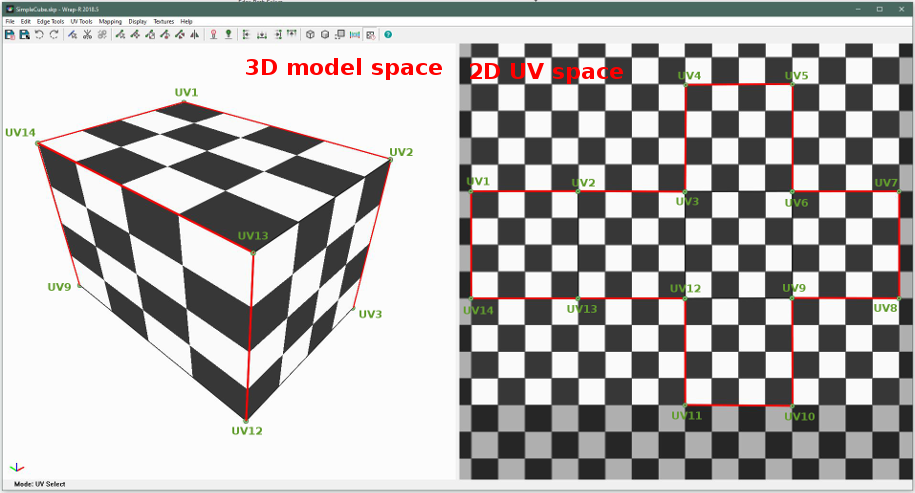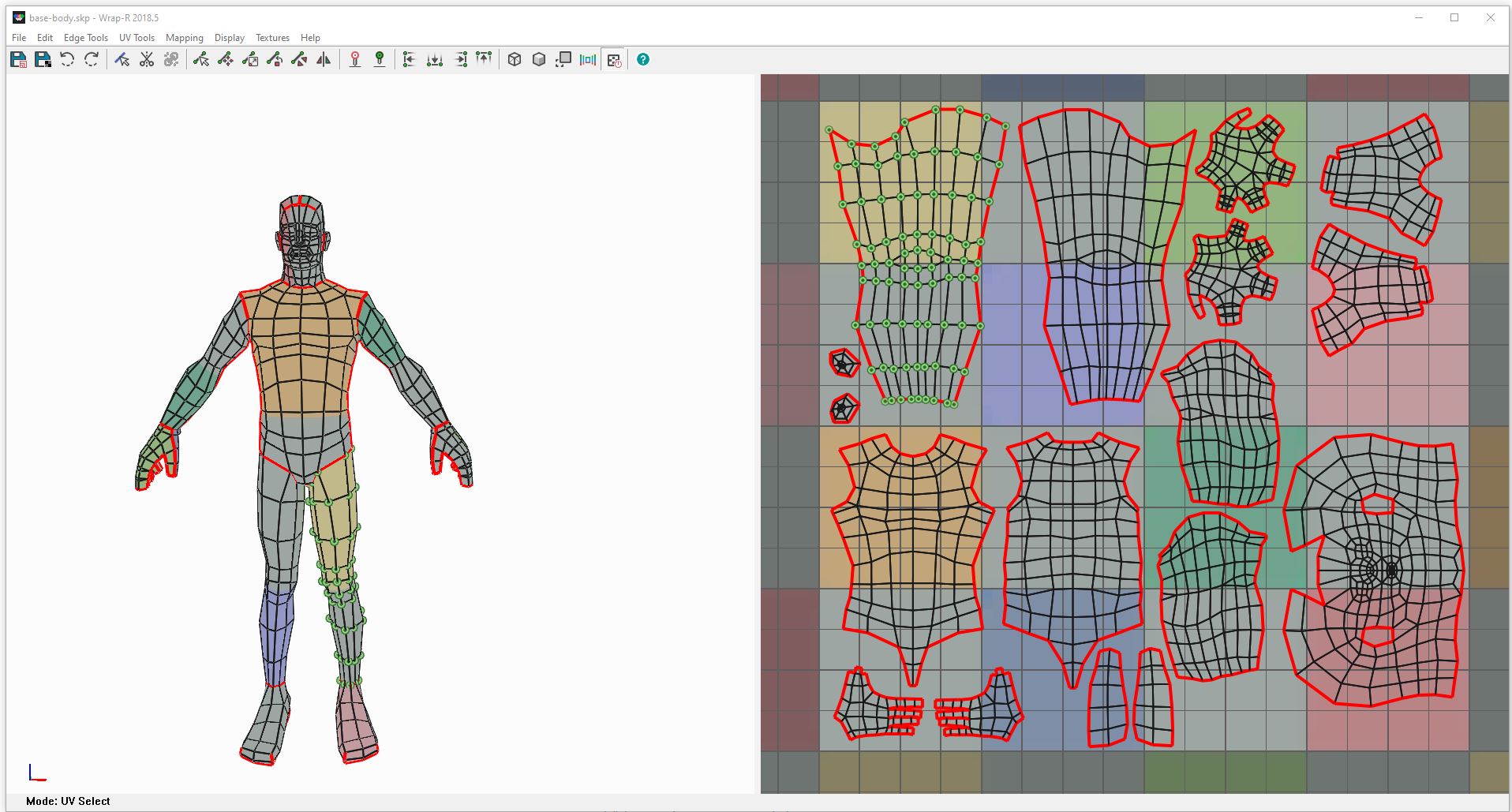This page of the documentation is under development.
UV Map
A UV map is the flat, 2 dimensional representation of the surface of a 3 dimensional model. It is used to map 2 dimensional texture images onto the 3 dimensional model surface. The process of creating an UV map is called UV unwrapping.
U and V are the horizontal and vertical axes of the 2 dimensional space. X, Y, and Z are the axes in 3 dimensional space.
The UV mapping creates a definite correspondence between points of the 2D UV space and the points on the model's 3D surface. See image below:

UV Unwrapping
UV unwrapping is the process of creating the UV Map. UV unwrapping can be made manually or by an unwrapping algorythm.
As in case of many 3D surfaces it is not possible to flatten the surface to a 2D coordinate system without any distortion it is important to find the right method of unwrapping
UV point
UV point is a point on the UV plane what corresponds a point on the 3D surface of the model. For UV mapping purposes we use the UV points located at the end points of edges.
UV island
UV island is a group of UV points connected with edges and separated from other UV points of the model by edge cuts.
The screenshot below shows one UV island selected:

UV stretch
UV stretch shows the amount of distortion of the polygons of the UV map. When there is no distortion the color of the polygon is green. When a polygon is stretched the color varies from green to blue depending on the amount of stretch. When the polygon is shrunken the color varies between green and red depending on the amount of shrinking.
When preparing a UV map the better the map the closer the polygon colors are to green.
The stretch color scale in Wrap-r:
